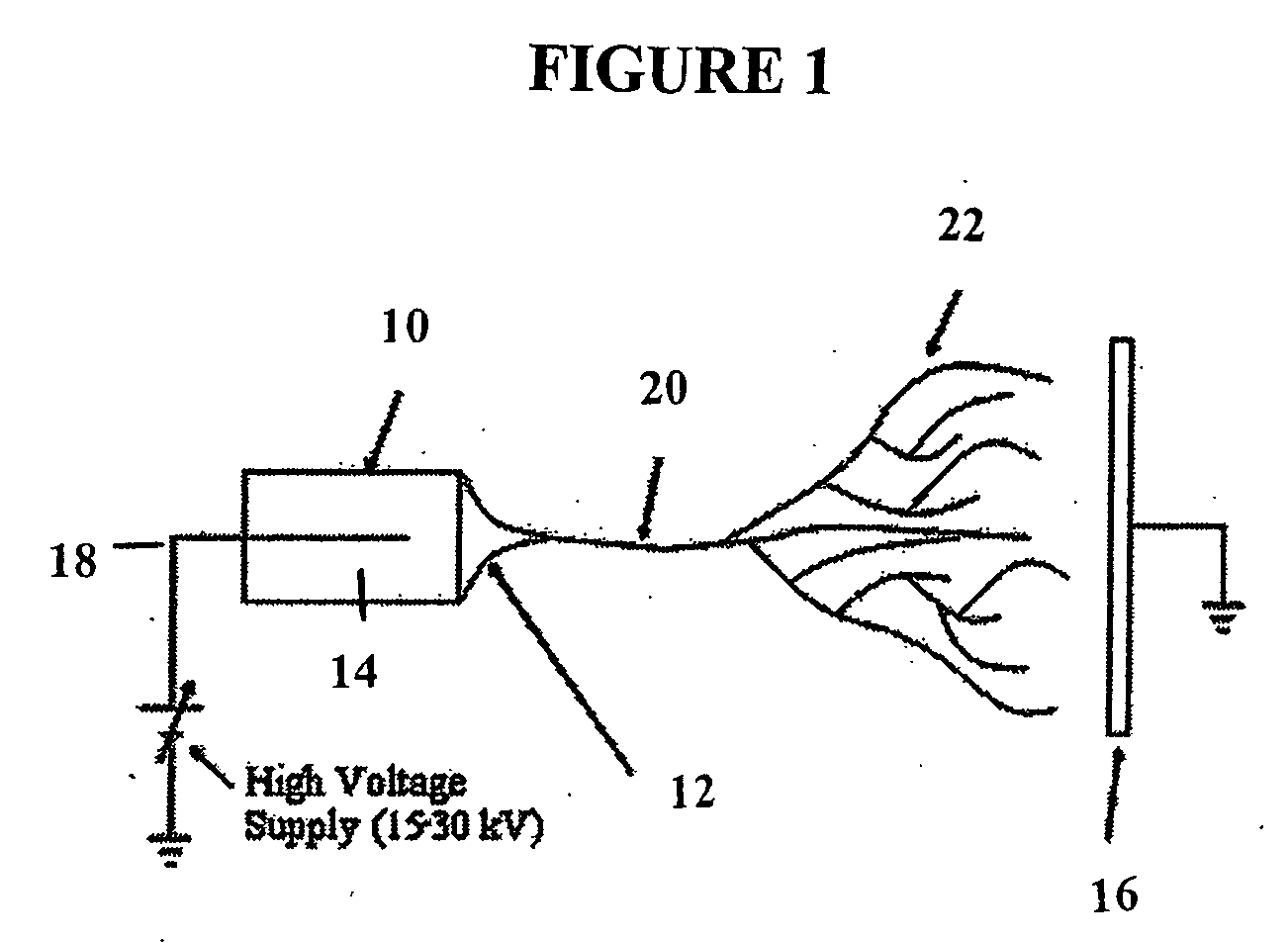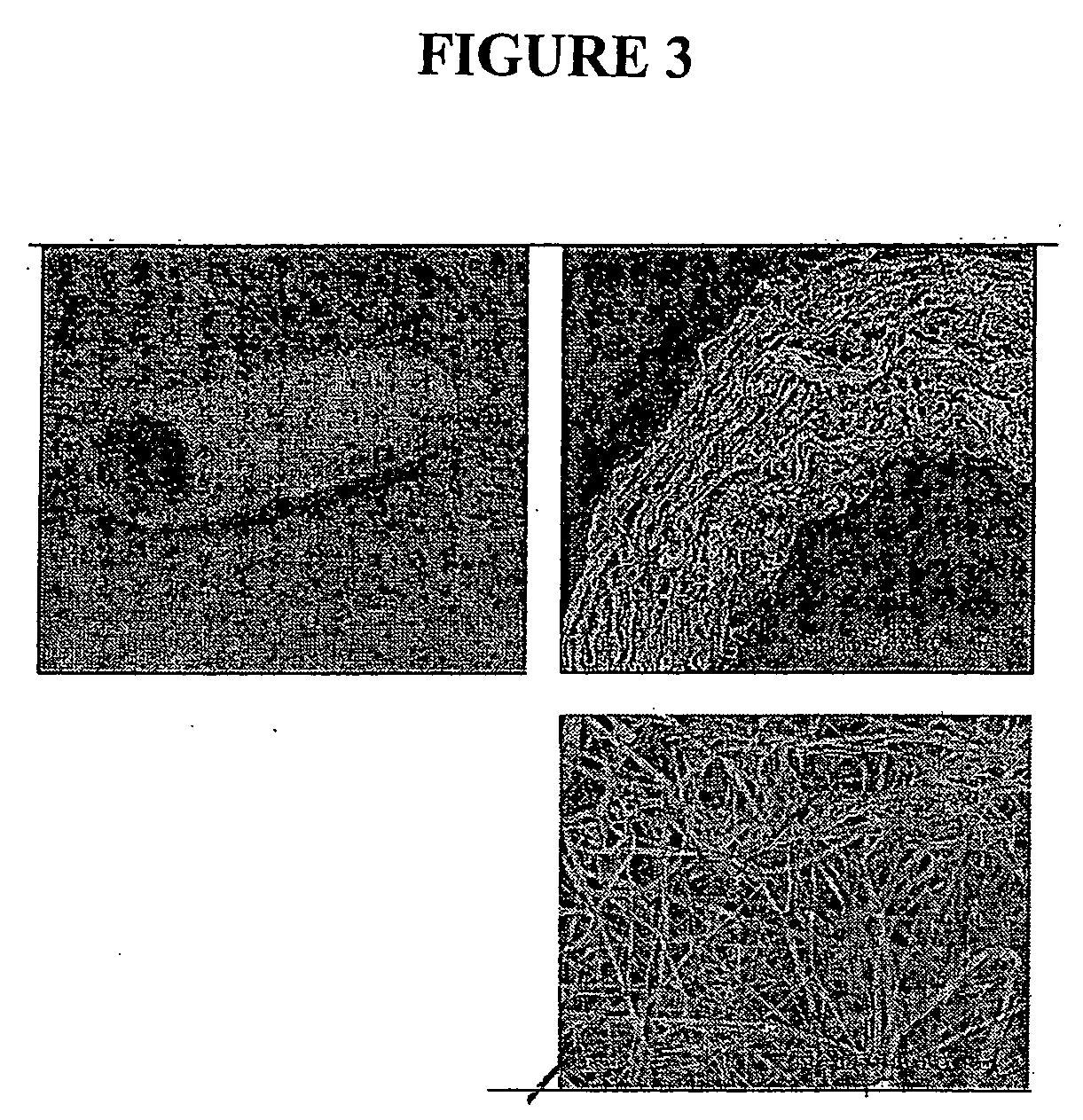Production of tissue engineered heart valves
- Summary
- Abstract
- Description
- Claims
- Application Information
AI Technical Summary
Benefits of technology
Problems solved by technology
Method used
Image
Examples
example 1
Methods and Materials
Materials
[0186] Unless otherwise stated, all chemicals were purchased from Sigma (St. Louis, Mo.). ECL buffers and 125I-Sodium were purchased from PerkinElmer NEN (Boston, Mass.). Collagenase type II (1 mg / ml) was purchased from Boehringer Mannheim (Mannheim, Germany). Endothelial medium (EBM-2) was purchased from Cambrex Bio Science (Walkersville, Md.). PCR reagents and primers, M199 medium, fetal bovine serum (FBS) and penicillin were purchased from Life Technologies (Gaithersburg, Md.). Basic Fibroblast Growth Factor (bFGF) was a gift from Judith Abraham, (Scios Nova, Calif.). Anti human CD31, anti vonWillebrand factor (vWF) and anfi smooth muscle actin antibodies were purchased from DACO (Glostrup, Denmark). Anti-CD105 antibodies were purchased from BD Pharmingen (San Diego, Calif.). Anti Flk-1 antibodies were purchased from Santa Cruz (Santa Cruz, Calif.). FITC-conjugated avidin was purchased from Vector Laboratories (Burlingame, Calif.). Athymic mice we...
example 2
Electrospun Matrices
[0206] An electrospun matrix was formed using the methods outlined in Example 1. A solution of collagen type I, elastin, and PLGA, were used. The collagen type I, elastin, and PLGA were mixed at a relative concentration by weight of 45% collagen, 40% PLGA, and 15% elastin.
[0207] The resulting fibrous scaffold had a length of 12 cm with a thickness of 1 mm. A 2 cm representative sample is depicted in FIG. 3. This demonstrates the feasibility of spinning Type I Collagen and elastin into fibers from nanometer to micrometer diameter using concentrations from 3% to 8% by weight in solution. These results also show that by adding PLGA (Mw 110,000) to the mixture, solutions with higher viscosity and improved spinning characteristics could attained. By increasing the solution concentration to 15%, thicker, stronger scaffolds were able to be built while maintaining the collagen and elastin components.
[0208] Collagen type I stained positively on the decellularized scaff...
example 3
Cross-Linking of Electrospun Matrices
[0215] This example demonstrates how to increase the strength and stability of the electrospun scaffold by chemical cross-linking. The scaffolds were soaked in 20% dextran solution in phosphate buffered saline prior to crosslinking to reduce hydration-induced swelling and contraction of the scaffold. The scaffolds were crosslinked by immersion in EDC / NHS in MES / EtOH solution for 2 hours at room temperature. Scanning electron micrographs of the resulting fibers showed fiber diameters of 500 nm or less and a random orientation of fibers. Atomic force microscopy of the scaffold and a confocal image of nanofibers with an adhering endothelial cell demonstrate the scaffold structure. These data show that it is possible to fabricate vascular scaffolds from biological polymers with mechanics and structure similar to decellularized scaffolds and native arteries.
PUM
 Login to View More
Login to View More Abstract
Description
Claims
Application Information
 Login to View More
Login to View More - R&D
- Intellectual Property
- Life Sciences
- Materials
- Tech Scout
- Unparalleled Data Quality
- Higher Quality Content
- 60% Fewer Hallucinations
Browse by: Latest US Patents, China's latest patents, Technical Efficacy Thesaurus, Application Domain, Technology Topic, Popular Technical Reports.
© 2025 PatSnap. All rights reserved.Legal|Privacy policy|Modern Slavery Act Transparency Statement|Sitemap|About US| Contact US: help@patsnap.com



